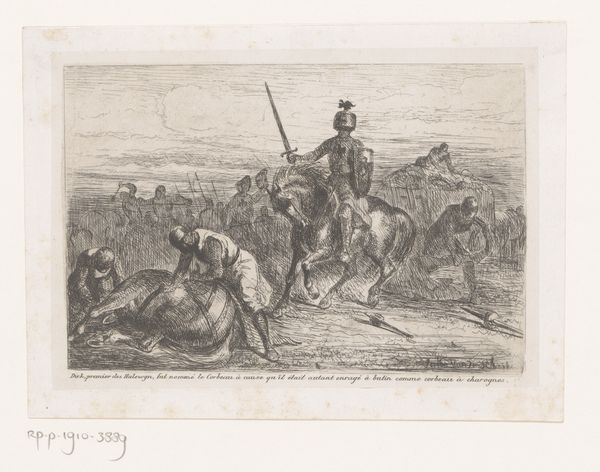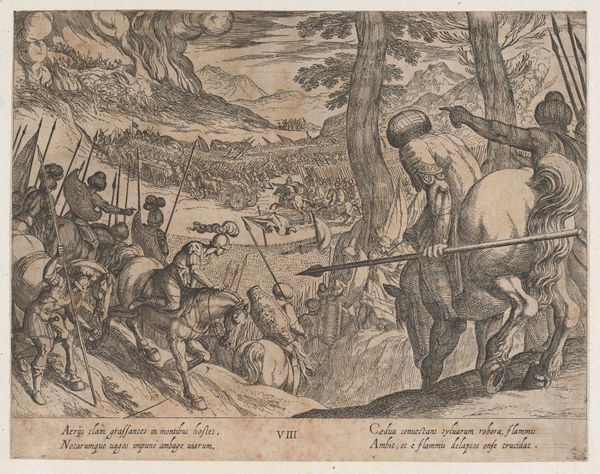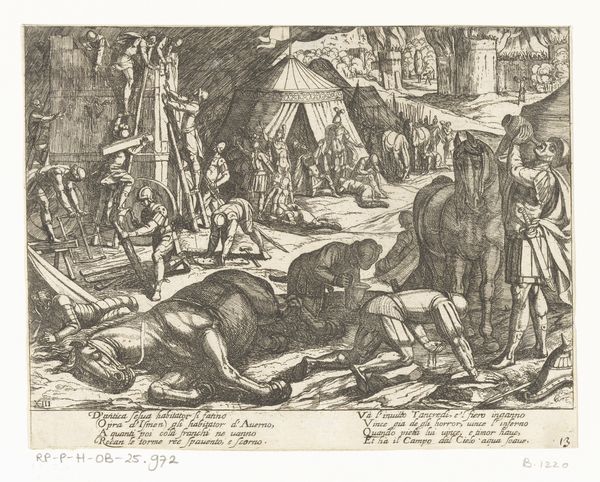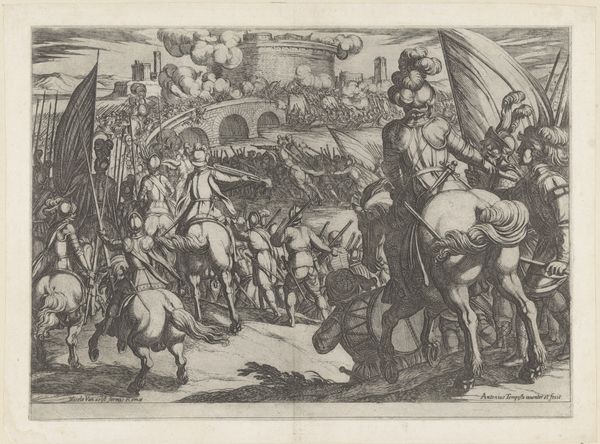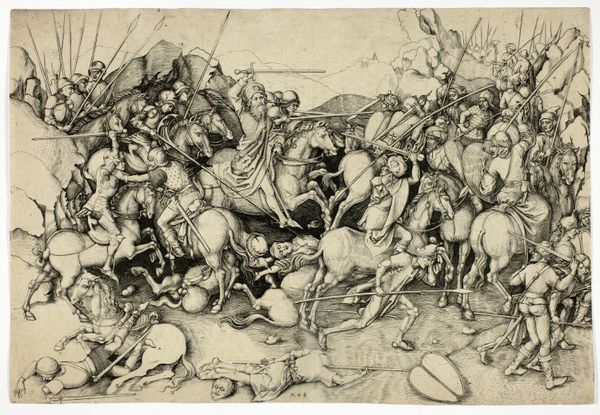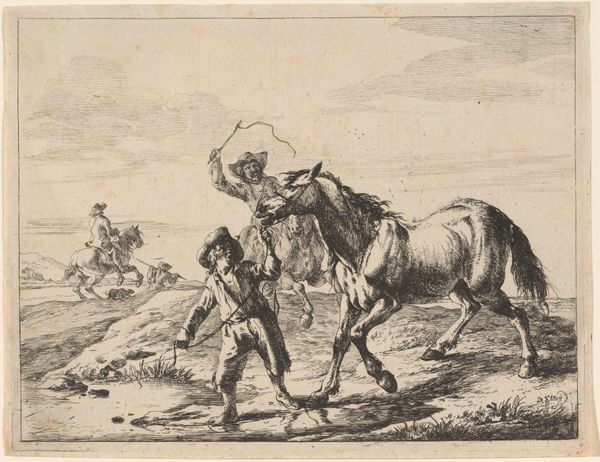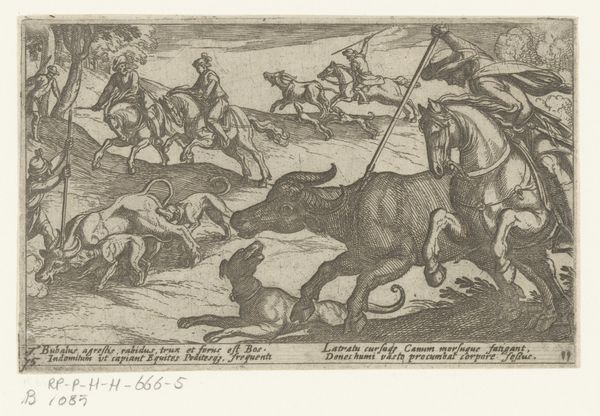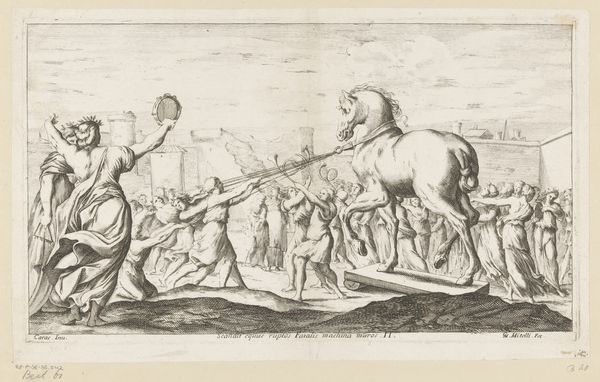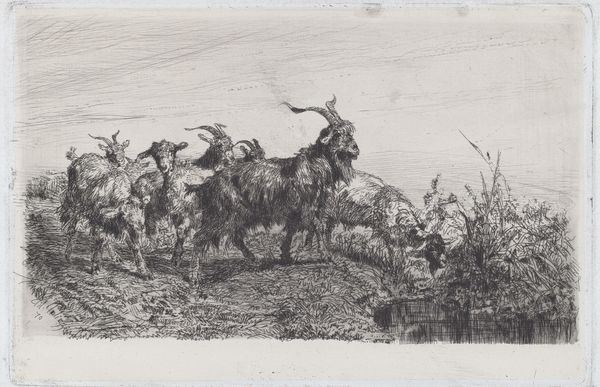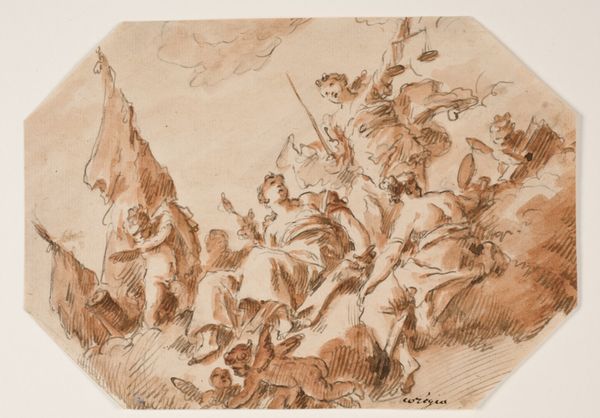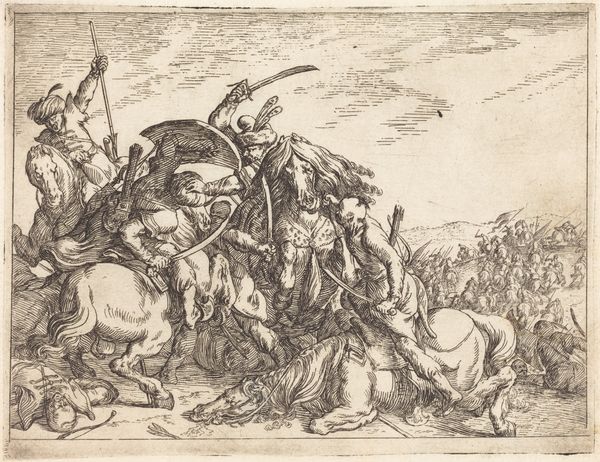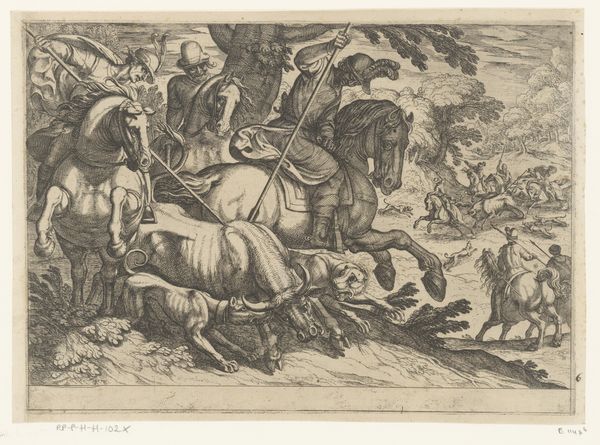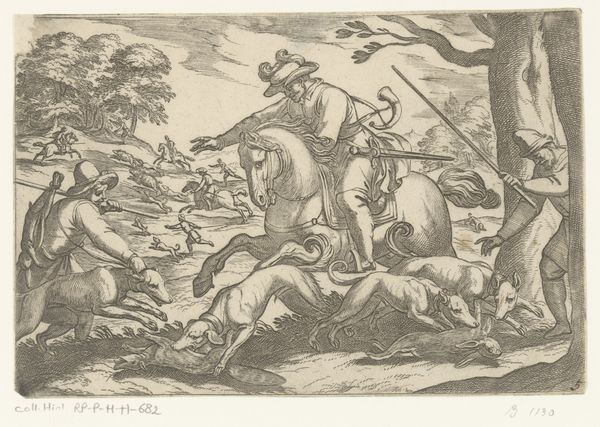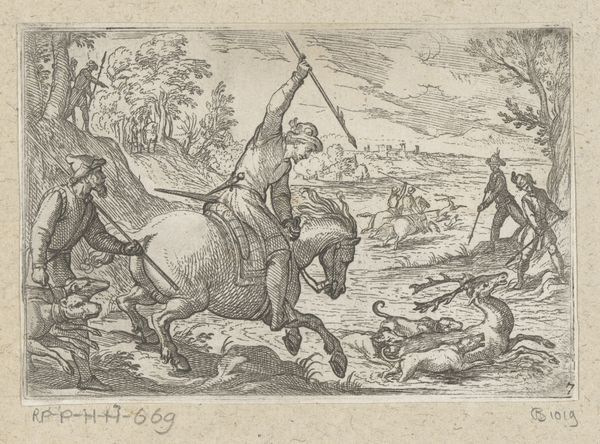
drawing, pencil
#
drawing
#
narrative-art
#
landscape
#
pencil
#
genre-painting
Dimensions: height 198 mm, width 270 mm
Copyright: Rijks Museum: Open Domain
Curator: This is Theo van Hoytema’s, "Menukaart met ossenspan en huifkar," a pencil drawing created before 1896, currently housed in the Rijksmuseum collection. Editor: The immediate impression is one of toil and perhaps celebration; there’s a heavy conveyance being pulled along, but also a buoyant energy in the figures and the overall composition. Curator: Precisely. The rhythmic repetition of the oxen and the energetic pose of the whip-wielding driver create a compelling linear movement toward the right side. Semiotically, the image offers a dichotomy, if not a struggle, between leisure and labour through spatial arrangements and the gazes. Editor: Yes, and considering the materiality, it's fascinating how the texture of the paper itself contributes to the sense of dusty, laboured journey, perhaps the source material for this art was the artist's lived experience? I mean, think about the social context, pre-industrial age with no internal-combustion engines or large infrastructure? It paints a very different picture. Curator: We might consider this drawing in the context of 19th-century genre painting as well. Hoytema cleverly orchestrates compositional complexity; he constructs layers through form and shape to create an engaging narrative of a culture we no longer easily recognize. The use of implied line invites the eye to navigate this constructed microcosm of what was everyday life for some, but extraordinary to many others. Editor: The means of its creation, its status as a menu card, adds to its meaning. A fleeting moment, immortalized as art. Was this paper a common sort of stock used in those menu cards, how was it fabricated? In my interpretation, its very purpose speaks volumes of material culture of the time. I want to understand it beyond merely appreciating the visual and spatial depth it possesses. Curator: A crucial point. Hoytema understood the implications of using humble material. Editor: Exactly. Its humbleness shouldn’t diminish its power as both art and cultural artifact! It speaks of the production methods of not only the paper itself, but the way the oxen labored to pull it forward as well. It makes me wonder about their material lives: were the whips from tree branches locally-sourced or bought, and did the people sitting atop ever get their own hands dirty? Curator: Indeed. Each view has enriched our perception of the artwork. Editor: Absolutely, this blend of aesthetics and lived experience offers a fuller sense of art history.
Comments
No comments
Be the first to comment and join the conversation on the ultimate creative platform.
